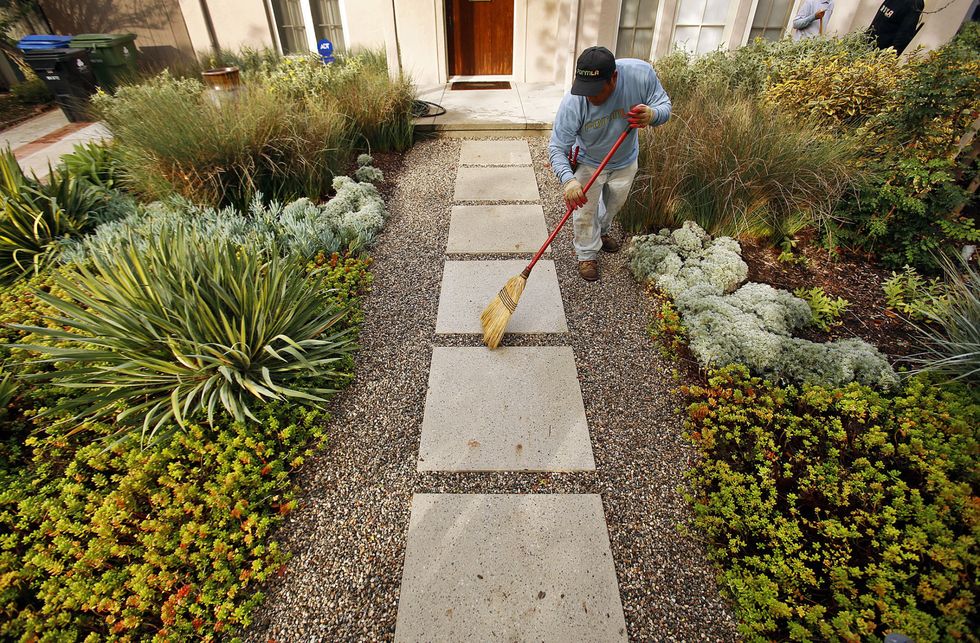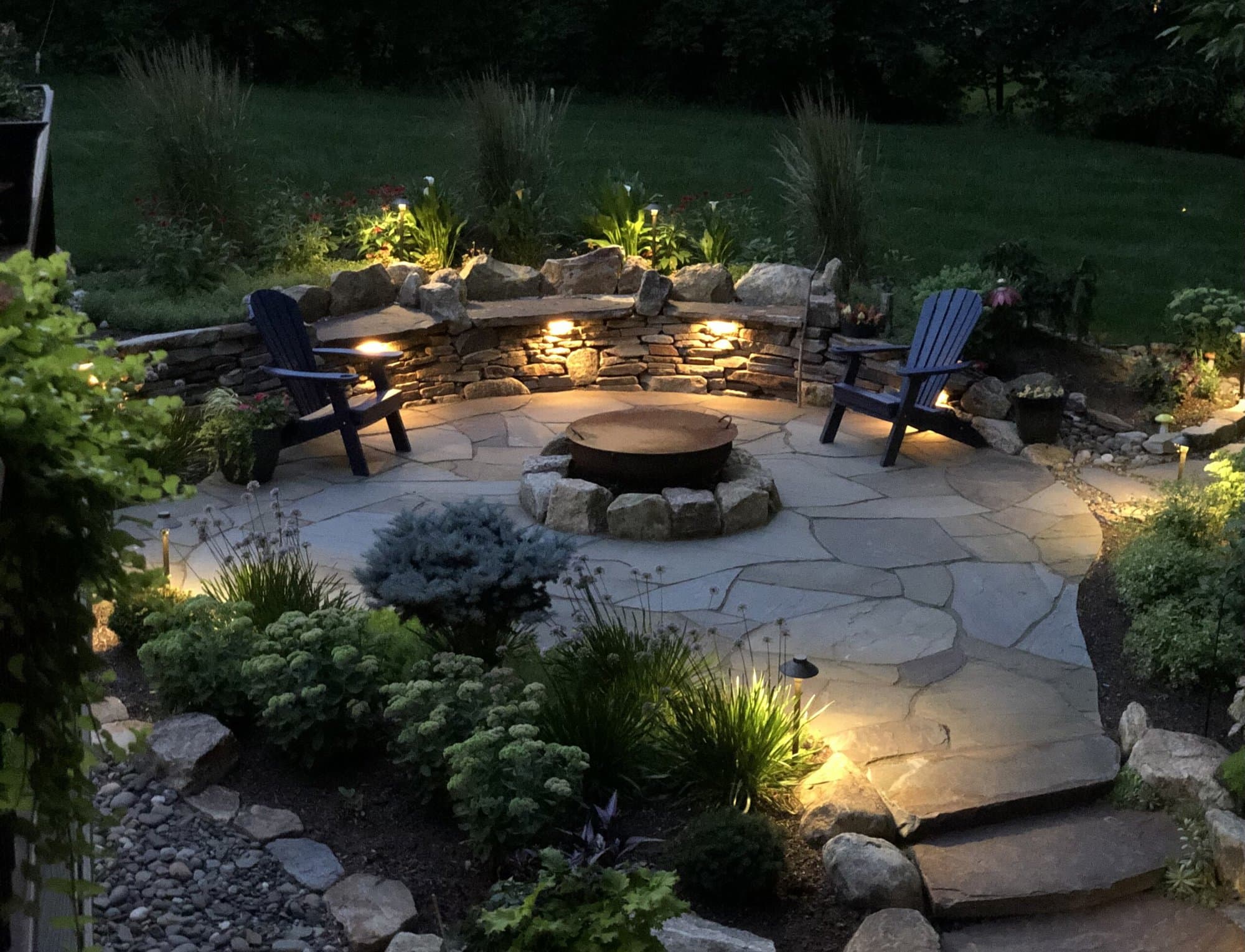Top Tips for Enhancing Your Yard with Palm Desert Landscaping Ideas
Top Tips for Enhancing Your Yard with Palm Desert Landscaping Ideas
Blog Article
A Comprehensive Guide to Creating and Implementing Effective Landscape Design Solutions
The art and science of landscaping expand past mere appearances; they include a thoughtful integration of layout principles, environmental stewardship, and functional implementation. What approaches can one utilize to guarantee these landscapes not just thrive yet likewise prosper in consistency with their environments?

Recognizing Landscape Style Principles
One could wonder what foundational aspects contribute to effective landscape style. At its core, successful landscape layout hinges on numerous crucial principles that lead the plan and selection of elements within a space. These concepts include unity, equilibrium, rhythm, and proportion, each offering to produce an unified outdoor environment.
Unity describes the natural connection amongst various parts, ensuring that they function together visually and functionally. Balance can be accomplished through asymmetrical or balanced plans, allowing the landscape to really feel secure and welcoming. Proportion involves comprehending the scale of components in connection with each various other and the surrounding environment, advertising visual harmony and comfort.

Assessing Your Outdoor Room
Prior to implementing the principles of landscape layout, an extensive evaluation of your exterior area is crucial. This initial evaluation helps specify the range of your landscape design job and guarantees that your style lines up with the distinct qualities of your home. Begin by analyzing the measurements of your space, taking specific dimensions to comprehend the readily available location for numerous aspects such as outdoor patios, pathways, and yards.
Following, observe the existing attributes of your landscape, consisting of topography, soil high quality, and drain patterns. These elements significantly influence plant selection and positioning. Additionally, evaluate the sunshine direct exposure across various locations throughout the day, as this will certainly affect the kinds of plants that thrive in your garden.
Consider the microclimates produced by structures, trees, and various other challenges, as they can affect temperature level and wetness degrees. Take note of any existing plants or hardscape elements that you wish to eliminate or preserve. This extensive assessment prepares for a well-informed and reliable landscape design solution, making sure that your style is not only aesthetically pleasing yet sustainable and also functional for several years to come.
Sustainable Landscape Design Techniques
These practices not just advertise ecological equilibrium yet additionally enhance the functional and aesthetic worth of a landscape. Carrying out effective irrigation systems, such as drip watering, reduces water waste and makes certain that plants get ample dampness (Palm Desert Landscaping).

Another reliable technique is the calculated placement of trees and hedges to provide all-natural windbreaks and shade, thus lowering power expenses (Palm Desert Landscaping). Rainfall yards can be integrated right into the landscape layout to manage stormwater overflow successfully, filtering toxins prior to they enter rivers
Selecting the Right Plants
Selecting the right plants for your landscape is essential to achieving both aesthetic allure and ecological harmony. The process starts with an understanding of your local environment, soil problems, and the certain microenvironments within your landscape. Evaluating factors such as sunlight exposure, dampness degrees, and existing plants will assist you pick plants that grow in your one-of-a-kind setting.
Take into consideration including native plants, as they go right here are well-adapted to local conditions, call for much less maintenance, and support neighborhood wildlife. Additionally, choosing a diverse range of species can enhance biodiversity while decreasing the danger of condition and bug break outs. It is necessary to examine the development behaviors, growing periods, and seasonal shades of prospective plants to create a dynamic and natural landscape.
Additionally, consider the planned use the space; for instance, if the location will experience high foot traffic, select durable ground covers. By thoughtfully selecting plants that align with both your environmental demands and visual goals, you can create a lasting landscape that not just enhances your home however also contributes favorably to the surrounding community.

Application and Upkeep Strategies
When the ideal plants have been chosen for your landscape, the emphasis changes to efficient implementation and recurring maintenance methods. Effective installation begins with proper site prep work, which includes dirt testing to determine nutrient degrees and pH, followed by modifying the soil as needed. Very carefully organize plants according to their development behaviors and light demands, making sure ample spacing to advertise healthy development.
Irrigation is a crucial component of implementation. Establish a watering timetable that considers the certain needs of each plant varieties, adjusting for seasonal modifications. Using drip irrigation systems can improve water effectiveness and minimize overflow.
Maintenance strategies should be implemented to guarantee the longevity and vitality of your landscape. Routine jobs consist of weeding, mulching, and trimming to control growth and stop disease. her explanation Fertilizing should be carried out based on dirt tests, providing the essential nutrients without over-fertilizing.
Keeping an eye on for conditions and insects is necessary; early discovery can stop significant damage. Seasonal adjustments to upkeep routines, such as winterizing perennials and preparing for spring development, will certainly make sure that your landscape stays healthy and balanced and visually attractive year-round.
Verdict
Effective execution and continuous maintenance better make sure the durability and vigor of landscapes. By integrating these aspects, landscapes can be changed into stunning, functional settings that promote biodiversity and contribute positively to area health.
One might wonder what foundational elements you can look here add to reliable landscape style. At its core, successful landscape layout pivots on several key concepts that lead the arrangement and option of components within an area.Selecting the right plants for your landscape is vital to achieving both visual appeal and eco-friendly consistency. It is necessary to assess the development practices, flowering periods, and seasonal colors of potential plants to create a natural and dynamic landscape.
As soon as the ideal plants have been picked for your landscape, the emphasis moves to reliable execution and recurring upkeep approaches.
Report this page